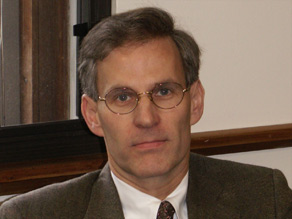A few months ago I bought a new jump drive. I still get utility from its design and size (both its physical size and mental capacity) every time I use it.
When I first came to BYU I bought a jump drive. It was a cutting edge 512 MB drive. I used it for a while, but it didn't last long because most of my computering happened on my computer at my apartment and I didn't have much need to take my files anywhere else. And it was annoying to carry around—it was like 2½ inches long and ¾ inches wide. I didn't want to have something that big in my pocket all the time, and I'm certainly not going to wear it around my neck.
It didn't take long for me to move away from using my jump drive and start using SD cards. I used a Pocket PC regularly at the time, so I could use my SD card on my Pocket PC or with a jump drive sized SD card reader. That worked really well for a while, but again the size of the SD card reader discouraged me from carrying it around everywhere (or anywhere, for that matter).
I eventually solved the problem by setting my computer up so I could remotely access it from anywhere. Then I didn't need to carry a jump drive and could get to any of my files at any time, so long as I had the internet. That was really cool and worked great; I quit using a jump drive or SD cards and just left everything on my computer.
When I moved to my new apartment, my computer situation changed drastically. The internet was incredibly slow, so I preferred working on campus. Also, I don't manage my own network anymore, so I can't setup my computer quite the same way. I can still get to it from anywhere if I need to, but it's not as easy or as fast of a connection. So the necessity of having a jump drive has returned.
In approaching this problem, I knew that I would need to be pretty selective in which jump drive I got. If I found a great price for a jump drive I wouldn't carry around then I'd just be wasting my money to buy it, 'cause I wouldn't use it. It was worth spending some time looking and a little bit extra money to get the one that I wanted and would use. So I started seriously searching for a jump drive I could love, treasure, and prize enough to have as my faithful companion and carry around with me everywhere.

It didn't take long to find The One Jump Drive: the
8GB Sony MicroVault, pictured at the right (pay special attention to the cloud-like aura—that took over an hour). It only took a few days to confirm that there isn't any better jump drive on the market. Now I've had my jump drive for several months. I think I love it more now than I did when I first got it. If you were going to marry or make out with a jump drive, this would be the one. I named mine Jacobi.
I bought Jacobi back in December for about $40 including shipping. Notice the first caution listed on the above website: "If swallowed, promptly see a doctor." This may seem odd at first, but it's there for good reason. The drive itself is smaller than an SD card. It measures 1.25" × 0.56" × 0.19". It is the smallest jump drive I have ever seen. It is small enough that I can carry it in my wallet. And my wallet is pretty compact. Check out how small it is (click to make it bigger):

To make Jacobi even cooler, I'm running 256 bit
AES encryption on half of it (AES encryption has been authorized for use in encrypting data up to the Top Secret level by the US Government). If I ever lost Jacobi I'd probably cry. But at least all of the data I have stored on it would be irretrievable without the appropriate decryption password. I've set up Jacobi to autorun so when it is plugged into a computer it automatically starts the encryption software and prompts for the password to mount the encrypted volume (named Dedekind).

And the final touch: the icon for Jacobi in My Computer looks just like my jump drive. And it's scalable. The picture actually changes to a different picture with appropriate resolutions depending on the size at which the icon is currently being displayed. Look at the picture to see what I mean (click on it to enlarge).
So my jump drive is about the coolest jump drive I've ever seen. If you haven't met Jacobi in person, ask me about it next time you see me.
 Today is my roommate Nelson's birthday. I baked this German Chocolate Cake for the occasion.
Today is my roommate Nelson's birthday. I baked this German Chocolate Cake for the occasion.





